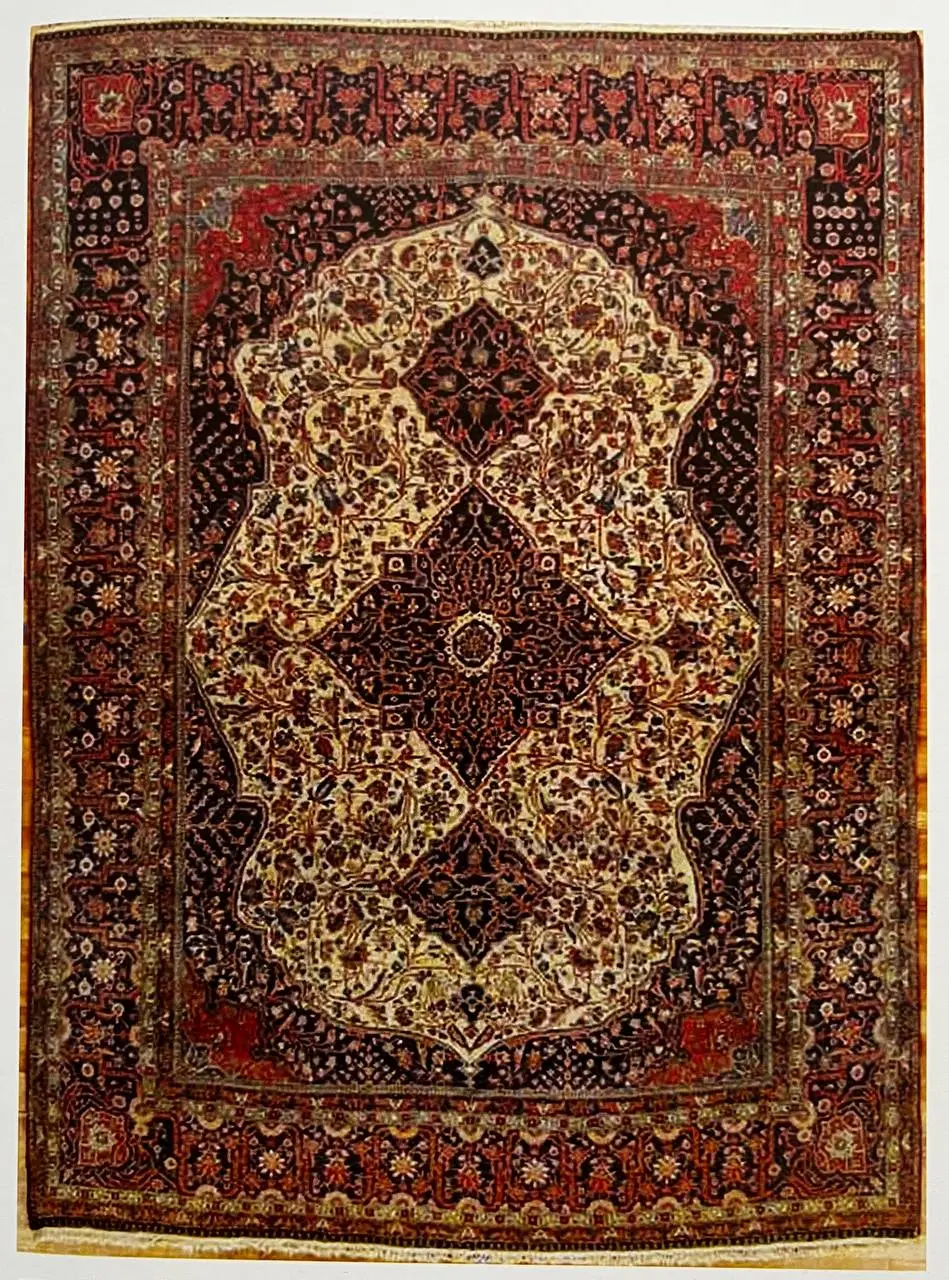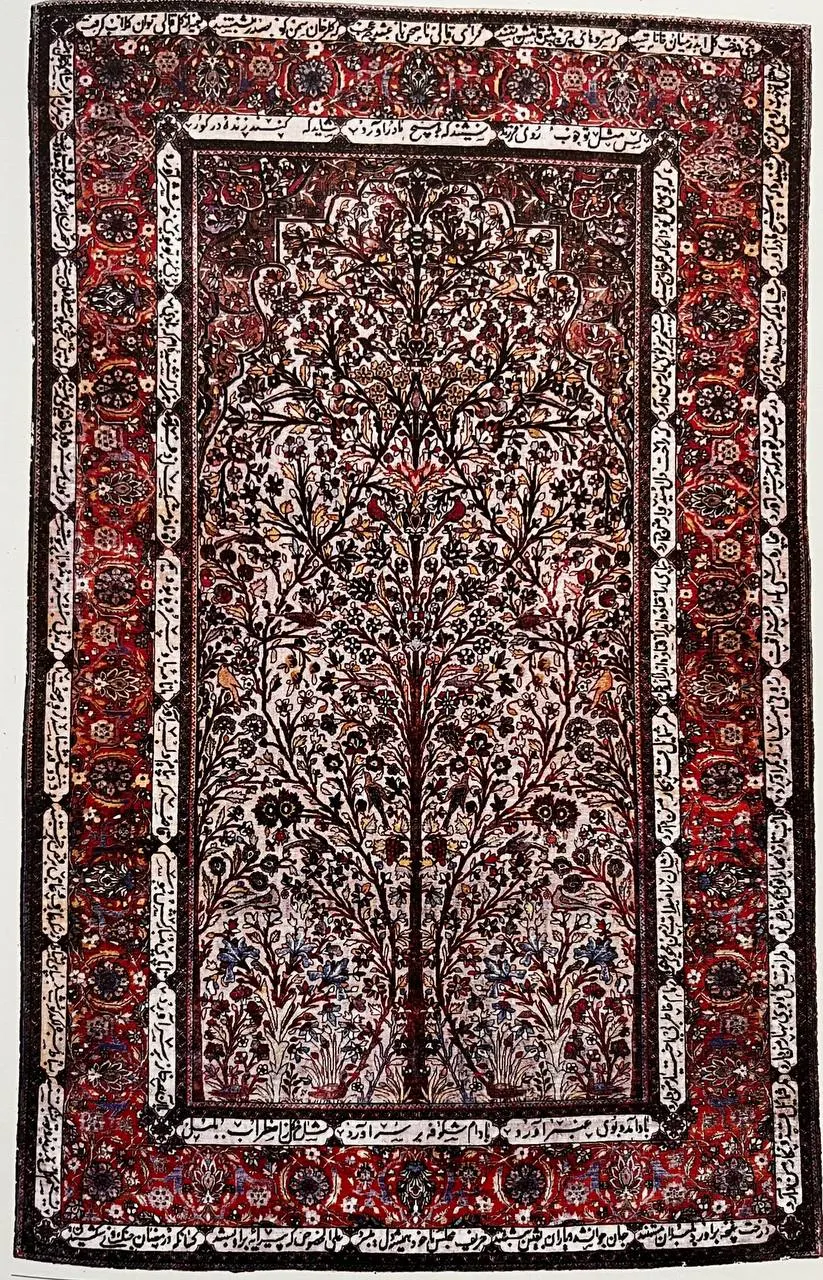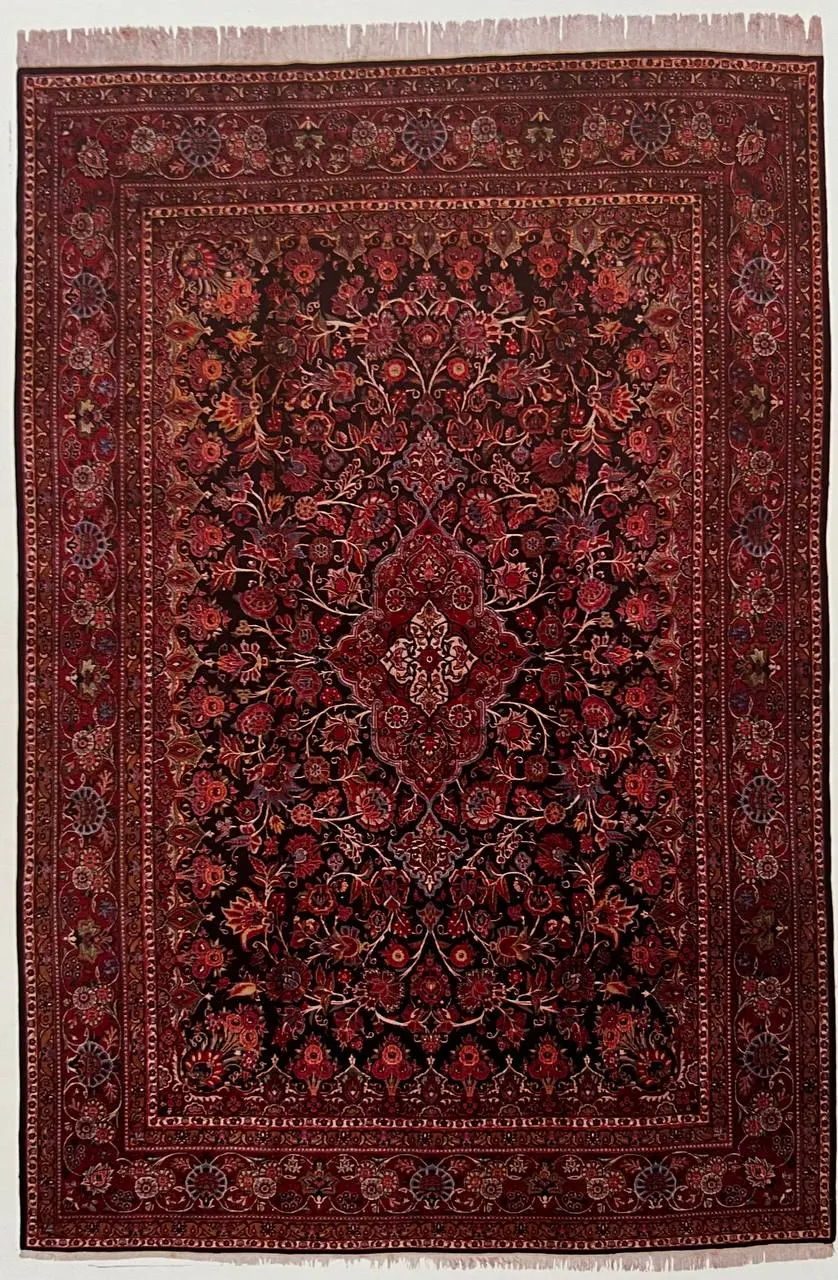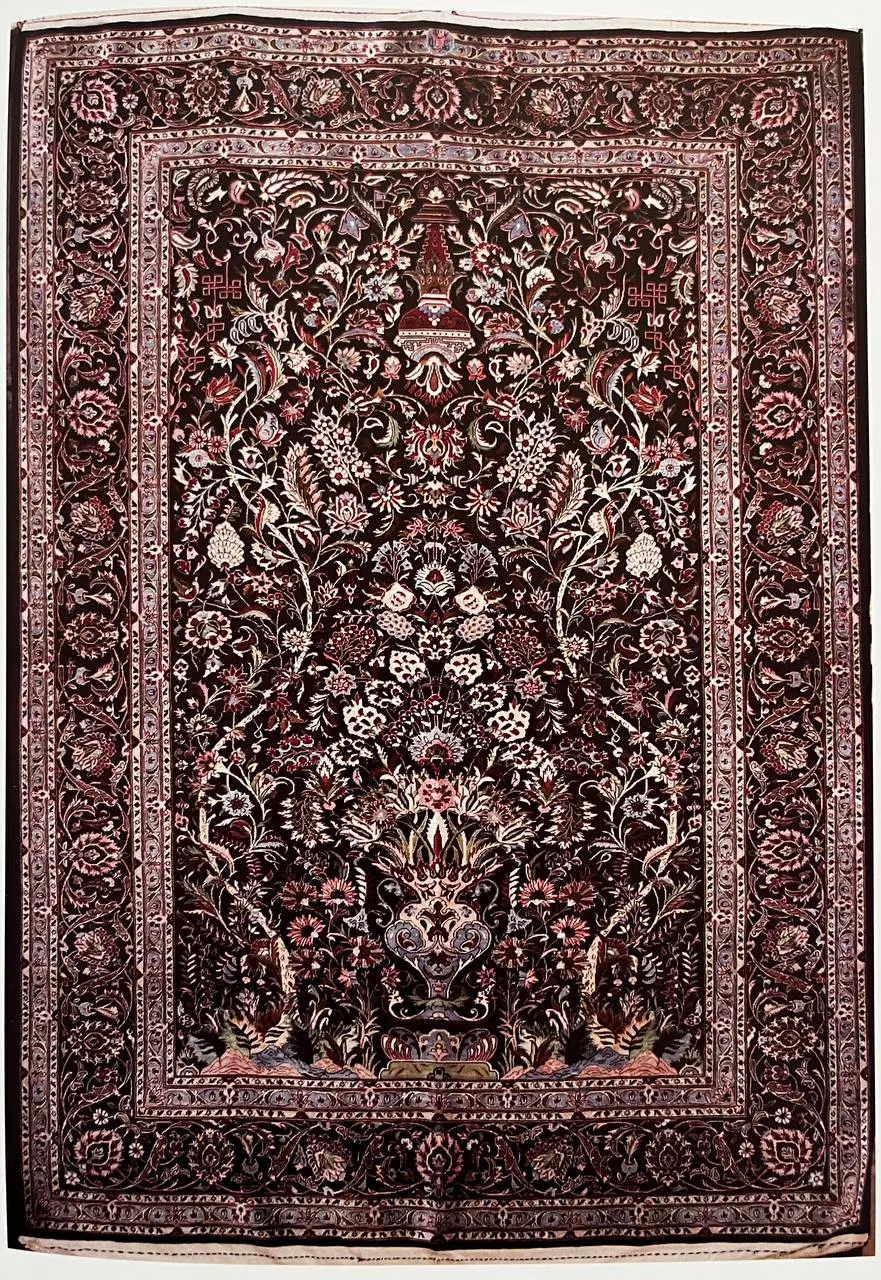The history of carpet weaving in Kashan
(History carpet weaving Kashan)Emphasizing that clothing was one of early humans’ primary necessities to protect their bodies from the elements and to shield themselves from the cold and heat, the texture of the Persian rug is the product of a period of weaving, or a process of its evolution. Naturally, one of the productions associated to clothing is the carpet, which serves as a barrier against the penetration of crawling insects and a heat-producing cover. The stage at which the carpet reaches a woven and cohesive production is evident in the subsequent weaving stages.

Fabrics or carpets are non-permanent items, there is no example of this kind of products, especially those bearing the name of a specific place or region. The lack of documents and documents from which clear and definite dates can be obtained makes the actual date of the creation of woven and carpets impossible.
*Click on the opposite link to see precious Iranian handmade and machine combined silk carpets*
The carpet is from the immediate family of textiles, and sometimes in periods of knowledge and awareness of the history and how the fabric is woven, it gives clear signs of the presence and texture of the carpet, as the finds of silk mounds of the type of spindles, spinning wheels and weaving tools can be signs of To certify the texture of fabric and even carpet. History carpet weaving Kashan
A look atThe history of carpet weaving in Kashan
1.Texture in history
The Greek mythology describes “Arachne, a girl who was very skilled in weaving and embroidery, to the extent that she considered her art to be superior to the Silk rug weavings of Athena, the goddess of art and weaving, and was condemned to weave a web like a spider until the end of his life.” This is an example of a spider-themed legend or myth.
In the Odysseus myth, Homer also describes Ulysses’ devoted wife, “who, while waiting for the return of Ulysses, in order to be safe from the pressure of his suitors, accepted the request of each of them.” It gets split at the end of the day. History Persian carpet designs weaving Kashan
The history of a land is mostly oral, with the species story—sometimes referred to as a myth—telling its tale. These myths have been around for several millennia in various places. The Ferdowsi Kayanian era in Shahnameh is undoubtedly equivalent to the third millennium BC in Iran, which fits in somewhat with the pre-Achaemenid kings.

2.Prehistoric texture
After the old stone age, in other words, in the middle neolithic age, it is the time when humans changed from desert tourism, hunting and fishing to living together. One of the first fruits of monogamy is farming and sowing seeds.
Will Durant writes in the book “History of Civilization”: “Undoubtedly, before this history, mankind was familiar with plant seeds and some plants or tree barks that can be spun into fibers. Perhaps the first human experiences for weaving were inspired by interwoven threads. It was spiders or tangled nests of birds. History carpet weaving Kashan
According to Will Durant, women invented weaving before men. He thinks about weaving: when a woman put the first seeds on the soil and began agriculture, she was able to meet requirements other than those for food and fuel. Perhaps the first practical experience with weaving that humans had was using the slender stems of trees to create products like baskets or nets. Then, man became familiar with fruits, trees, and the thin plant stems that produced fibers for growth.
Will Durant: “They became familiar with fibers like linen and domesticated animals and used them to make textiles during this period, when the first revolution in human life occurred before the history of my continuum, and they obtained needles, pins, knives, axes, scissors, knitting machines, and some other tools.” They bought carpet and clothing for themselves.

It appears that the first textile weaving was a type of buria, in which the threads were twisted and weaved together, or the animal skin was punctured and the thread was passed through it to create shoes, belts, belly bands, and other items. This makes the thread slightly more subtle. Then, using materials derived from colorful soils or plant extracts, they created colored textiles.
Before the start of the history of ancient nations like Egypt, which goes back six millennia, people would grind wheat into flour, make kraji, and use the fibers from linen to produce cloth, clothing, and carpets for themselves. History Style and maktab of Persian carpet weaving Kashan
It is evident that fabric weaving developed in some parts of Iran at the end of the third millennium BC and the beginning of the second millennium BC as a result of connection through trade and commerce as well as under the influence of the semi-Mesopotamian civilization. This includes Kashan silk. Ilam has developed and advanced.
The social life that persisted for nearly two millennia following the invasion and dominance of Mesopotamian region governments—likely Assyria—seems to have run out until the end of the Achaemenid period and the start of the Sassanid period, which is a golden period in the fabric of the fabric, once more shows signs of revival. The residents of Ansilk and the area that was once a form of a city and is now known as Kashan can be assumed to have started the Origins of Persian carpet weaving technique based on their taste and interest in industrialization, particularly in the weaving of textiles, which we witness in later periods.

There are two small and large hills in the Silk region, which is located near Fin on Kashan’s southwest side. Pieces of basic, engraved pottery found in the big hill that dates back to the earliest records of human life in this area point to the emergence of a certain level of artistry.
Girshman: “The Iron Age marks the beginning of civilization in the little hill.” The finding of tablets at Ilam, which demonstrates that calligraphy existed in central Iran for at least 5,000 years before Christ, and the knowledge that the fibers could be used for cloth weaving and even dying are two of the most significant discoveries in this field. History carpet weaving Kashan
Silk shells and marine animal shells from what were likely the Mediterranean or Persian Gulf coasts were discovered during the earliest historical era.
